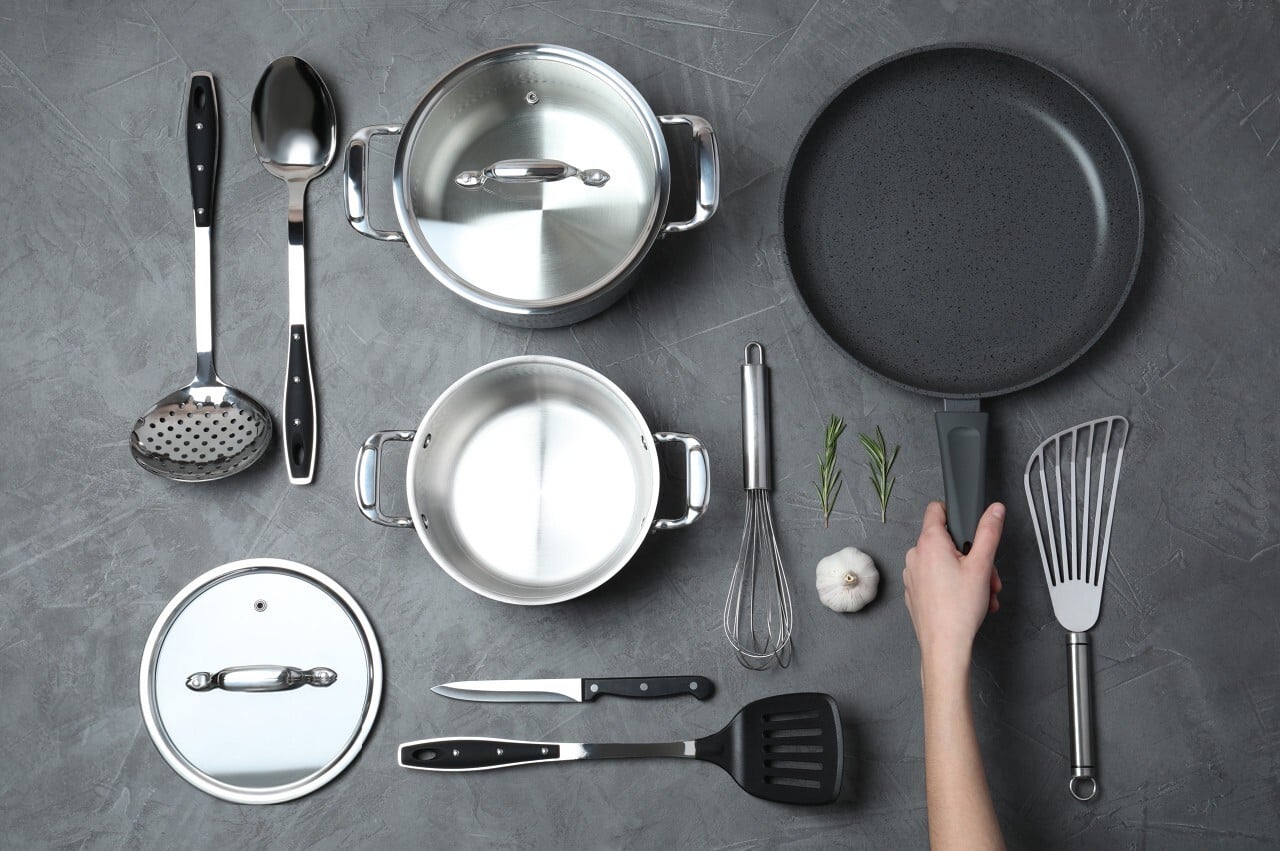There are many different types of cookware in the market today. Teflon coated, silicone coated, aluminum clad with platinum, ceramic coated or clad in stainless steel- these are just some examples of different materials in the cookware market today. Many people worry about how harmful frying can be on their pots and pans when they watch their oil fry up against the pan’s surface before it pops or flashes off. However there is one material that is so amazing at heating up quickly and not burning bacteria accumulated on its surface that it’s only use should be for deep fat frying: stainless steel. There is only one material that can withstand the high heat of deep fat frying and it is stainless steel. When I think about what I like about stainless steel the first thing that comes to mind is that it is very hard, dense and non-porous (shows zero rust). It is also known as a non-reactive surface. What does this mean? A non-reactive surface means that it will not react with other things in your kitchen or cause an allergic reaction for those with sensitive skin. The most important aspect of a cookware surface is its ability to transfer heat so all materials with this quality are usually used for cooking large amounts of food.
How Teflon and stainless steel cookware differ
1. They are different materials
Teflon is mostly flourine and perfluorooctanoic acid (PFOA) and stainless steel is mostly iron, chromium and nickel . Teflon is also known as perfluorinated polymer, PTFE or polytetrafluoroethylene. Stainless steel is made of various metals such as chromium and nickel.
2. Teflon coating provides a non-stick surface
Stainless steel has a non-stick surface too without the peeling and chipping off that you get with Teflon coated pans. Stainless steel does not need to be coated in order to be non-stick because it is naturally smooth and slick because of its material composition.
3. Teflon is not as hard as stainless steel
Teflon is less hard than steel and can easily be scratched or dented. This means that it can also scratch or damage your pots and pans.
4. Teflon may release fumes
Teflon has been known to release dangerous fumes when overheated, heated with acidic foods (tomatoes, fruits) or subjected to very high temperatures (hi heat). “Fumes” is the keyword here because even though the fumes are toxic they are not heavy enough to accumulate in your lungs or be absorbed into your skin. The fumes do not affect your health and can be easily released from the surface of the pan.
5. Teflon coating is easy to clean
Teflon coated pans need to be cleaned with a special scouring pad and will need to be dry after washing with hot water and some dish soap. Stainless steel will not need these special cleaners but can still be cleaned by hand, with a sponge or in the dishwasher. When you’re finished cooking stainless-steel covered pans can also benefit from a quick rinse under water with hot tap water after washing to help reduce potential odors left behind from fatty foods clinging to the surface of the cookware.
Is stainless steel better than Teflon?
If you are debating between Teflon coated pans and stainless steel pans, there are certain unique advantages to each. Teflon coated pans will cook food the most evenly than stainless steel, they also work better at lower temperatures than stainless steel. However, if you’re looking for non-stick cookware that will last years instead of just a few months then choose stainless steel. Of course if you want to see how non-stick your Teflon coated pans are using this great experiment. Another benefit of using stainless steel over Teflon is that it can be easily cleaned without any special cleaners—just soap and hot water.
Is stainless steel safer than non stick?
While I agree that stainless steel pans are safer than non-stick cookware, there are still some concerns to be wary of. First of all, even though the non-stick surface of Teflon coated pans is designed to contain certain toxic fumes released when heated, they are still harmful. The fumes are not heavy enough to build up in your lungs or be absorbed into your skin so you won’t experience any health problems. But there is still a possibility that the fumes will build up on the surface of your pan and if left unchecked could eventually damage your pan.
Why are stainless steel pans bad?
One of the biggest reasons why stainless steel cookware is bad is because of the nickel content. Over time, this metal can cause allergic reactions in sensitive individuals or even produce nickel-induced contact dermatitis for those with a preexisting condition. That being said, metal allergies are extremely rare. One way to avoid the possibility of an allergy is to buy a stainless steel cookware set that says it’s non-allergenic or nickel free.
Can you get non stick stainless steel?
There are many brands of high quality stainless steel cookware that claim to be non-stick. While most of this cookware is, you cannot completely avoid food sticking to the surface of the pan. When cooking with non-stick stainless steel you will not need to use as much oil or butter, however you may need to use more than you would with your everyday pan. This is because stainless-steel covered pans are known for their ability to heat up quickly, evenly and without burning food left on its surface. So if you are looking for something that conducts heat very well then stainless steel cookware is the way to go.

